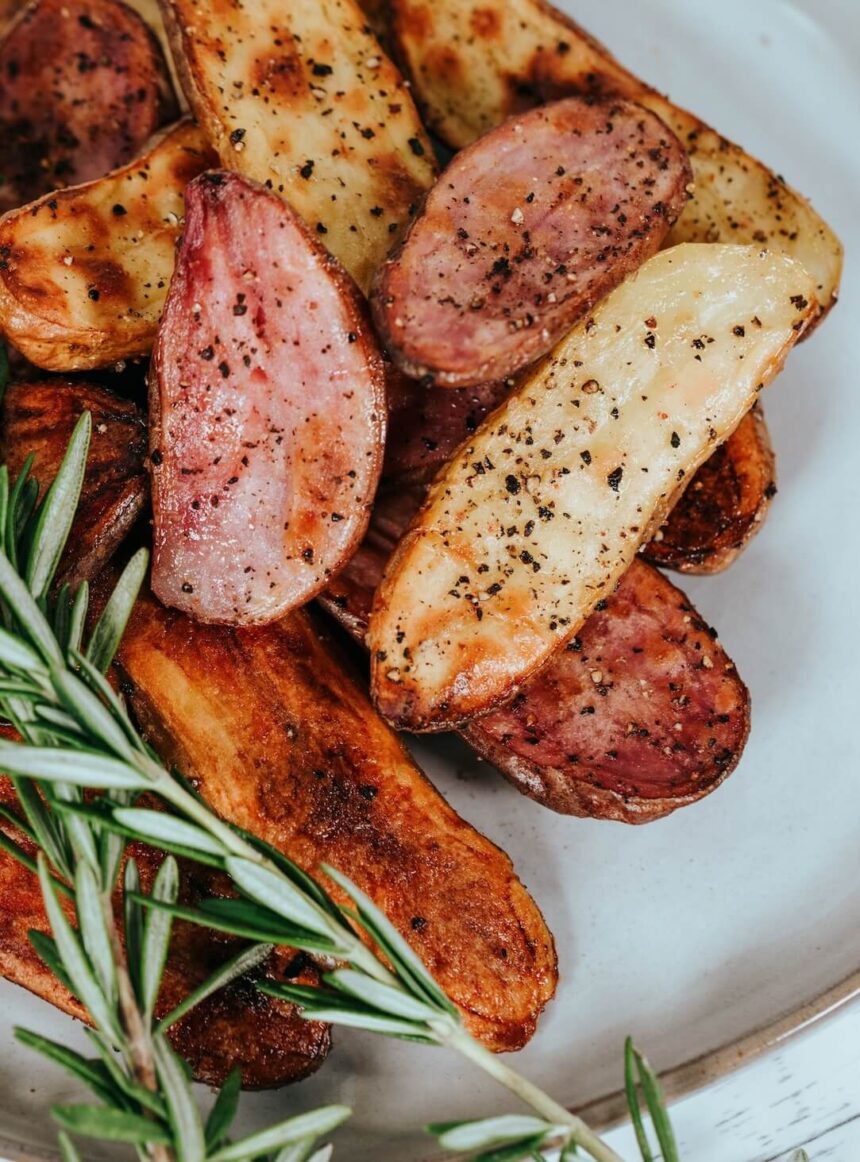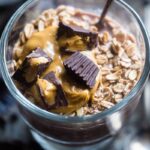When people experience digestive symptoms, one common reason is that of certain foods they eat. Many diets eliminate these trigger foods – common ones being gluten, dairy, and soy. But for other people, the culprit is something called FODMAPs.
The only problem is, many people have no idea what FODMAPs are. Or, that they’re causing their digestive symptoms. So, if you have digestive problems but can’t figure out why, keep reading: you may have to consider a low FODMAP diet.
What Are FODMAPs?
FODMAPs is an acronym for fermentable oligosaccharides, disaccharides, monosaccharides, and polyols.
Now, if you have no idea what any of that means, don’t worry. Here’s the low down.
Fermentable oligosaccharides, disaccharides, monosaccharides, and polyols are food molecules. To be specific, they are short-chain carbohydrates that are mostly made up of sugars like fructose, lactose, fructans, galactans, and polyols.
Why Are FODMAPs a Problem?
As their name suggests, they ferment within the body, and for most people, this isn’t a problem.
However, for other individuals these fermentable short-chain carbohydrates, i.e., FODMAPs, cause significant digestive symptoms, like bloating, gas, stomach pain, as well as diarrhea and constipation.
How the FODMAP Diet Works
Like other elimination diets, the low FODMAP diet cuts out those fermentable carbohydrates completely for a specific amount of time. This allows the digestive tract to get some much-needed relief and, if necessary, to heal, too.
Restriction Stage
This first stage Is called the restriction phase and can last anywhere from three to eight weeks. For individuals who get relief more quickly, the restriction phase may be shorter.
Reintroduction Stage
Once you’ve done a strict elimination and restriction phase, next comes the reintroduction stage. Gradually, individuals can reintroduce FODMAP foods back into their diet and start to identify which ones are problematic and which ones they can tolerate.
You do this by trying one new food at a time over three days.
Not only does this stage help you identify the foods you can tolerate, but it also helps you identify how much of each FODMAP food you can eat without experiencing symptoms.
Who Should Try the FODMAP Diet?
As you can see, the low FODMAP diet is a fairly involved process, and it can be overwhelming and require some significant life changes. After all, meal planning will need a complete overhaul. And eating in restaurants can be problematic, too.
However, following a low FODMAP diet can significantly improve the quality of life for individuals who try it. So, who should consider the low FODMAP diet?
Studies show that individuals with IBS (irritable bowel syndrome) can greatly benefit from this type of diet. That’s because hallmark symptoms of IBS include bloating, gas, stomach pain, and irregular bowel movements.
By following a low FODMAP diet, these individuals see a reduction in those very symptoms. Therefore, if you have an IBS diagnosis, you may want to consult with your medical professional to decide if a FODMAP restriction diet is appropriate for you.
If you’d like to try the low FODMAP diet, get some professional guidance from a food coach or dietician. They can give you the direction and support you need to commit to this plan. What’s more, with their help, you can get some much-needed relief.
While the low FODMAP diet can be the perfect solution for some individuals, it’s not for everyone. That’s because FODMAPs act as prebiotics and can help to promote good bacteria in the gut.
Therefore, if you cut FODMAPs out of your diet unnecessarily, you can actually deprive your gut of the prebiotics necessary for a healthy microbiome.
What Can You Eat on a FODMAP Diet?
If you have an allergy or sensitivity to dairy, for example, your diet is relatively straightforward: you eliminate or reduce dairy products from your diet.
But if you follow a low FODMAP diet, it’s not obvious which foods you must avoid. After all, how many people know which foods are high and low in FODMAPs?
To set the record straight, here are two food lists that give you an idea of the foods you can and can’t eat on a low FODMAP diet.
High FODMAP Foods
High FODMAP Vegetables to Avoid
- Artichoke
- Asparagus
- Broccoli
- Casava
- Cabbage
- Cauliflower
- Fermented cabbage
- Garlic
- Green peas
- Leek
- Mushrooms
- Onion
- Pickled vegetables
- Scallion
- Shallot
- Sugar snap peas
High FODMAP Fruits to Avoid
- Apples
- Apricots
- Avocado
- Blackberries
- Cherries
- Dates
- Dried fruit
- Figs
- Mango
- Nectarines
- Peaches
- Pears
- Plums
- Prunes
- Raisins
- Watermelon
High FODMAP Dairy Products to Avoid
- Cow milk
- Custard
- Evaporated milk
- Ice cream
- Soy milk
- Sweeten condensed milk
- Yogurt
High FODMAP Grains to Avoid
- Barley
- Rye
- Wheat
- Most legumes
High FODMAP Beans to Avoid
- Baked beans
- Black beans
- Broad beans
- Butter beans
- Haricot beans
- Kidney beans
- Lima beans
- Mung beans
- Soybeans
High FODMAP Nuts to Avoid
- Cashews
- Pistachios
What do all of these forbidden foods have in common?
Well, they are all main sources of FODMAPs, or fermentable oligosaccharides, disaccharides, monosaccharides, and polyols. And these molecules can cause significant digestive discomfort in certain individuals – especially those with IBS.
Now, that definitely looks like a lot of food you can’t have, but luckily, a low FODMAP diet includes a wide variety of foods you can eat. Check them out!
Low FODMAP Foods
Low FODMAP Vegetables You Can Eat
- Alfalfa
- Bamboo shoots
- Bean sprouts
- Bell peppers
- Bok choy
- Butternut squash
- Carrots
- Chives
- Corn, non-GMO
- Cucumbers
- Eggplant
- Fennel
- Fresh herbs
- Ginger
- Lettuce, including butter, iceberg, radicchio, rocket and romaine lettuce
- Kale
- Okra
- Olives
- Parsnip
- Potato
- Pumpkin
- Radish
- Spaghetti squash
- Spinach
- Sun-dried tomatoes
- Sweet potato
- Swiss chard
- Tomato
- Turnip
- Water chestnuts
- Winter squash
- Yam
- Zucchini
Low FODMAP Fruits You Can Eat
- Bananas (small and not too ripe)
- Blueberries
- Cantaloupe
- Cranberry
- Clementine
- Grapes
- Honeydew
- Kiwi
- Lemon
- Lime
- Mandarin
- Orange
- Papaya
- Pineapple
- Plantain
- Raspberry
- Rhubarb
- Strawberry
- Tangelo
- Tangerine
Low FODMAP Dairy Products You Can Eat
- Almond milk (high quality)
- Butter
- Coconut milk (high quality)
- Rice milk (high quality)
- Raw hard cheese
- Yogurt, like goat’s milk yogurt
Low FODMAP Legumes You Can Eat
- Chickpeas or garbanzo beans
- Lentils, small amounts
Low FODMAP Grains You Can Eat
- Corn, GMO-free
- Rice, GMO-free
- Oats, gluten-free
- Quinoa
Low FODMAP Nuts and Seeds You Can Eat
- Almonds, a small amount
- Brazil nuts
- Chestnuts
- Hazelnuts, small amounts
- Macadamia
- Peanuts, organic
- Pecans
- Pine nuts
- Pumpkin seeds
- Walnuts
- Seeds like Chia, pumpkin, sesame, and sunflower
If you experience digestive problems and/or have IBS, consider talking with a medical professional to decide if a low FODMAP diet can help you enjoy a wide variety of food without digestive problems.








